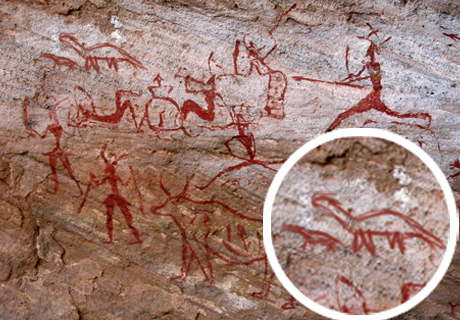It looks like you're using an Ad Blocker.
Please white-list or disable AboveTopSecret.com in your ad-blocking tool.
Thank you.
Some features of ATS will be disabled while you continue to use an ad-blocker.
share:
A thorough analysis of history shows compelling evidence that dinosaurs were in fact seen consistently throughout history. This truth has been
incidentally buried in semantic ambiguity. The word "Dinosaur" was first used in 1842 by Sir Richard Owen and was defined as 'Terrible Lizard'. Prior
to this date, reptilian creatures would have been referred to as dragons, or some other unique name that resembled their monstrous character.

The dragon slowly slipped into the category of mythology rather than history. But this is only due to the gradual extinction of dinosaurs over time. Most are not the seemingly embellished fire-breathing winged monsters, but rather, matter-of-fact accounts of real living creatures. Here we have another example of how dinosaurs/dragons were becoming extinct even in the 1614 when this article was printed:
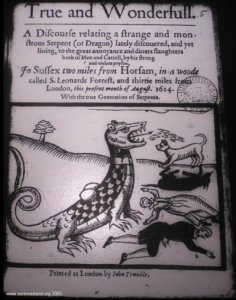
Dinosaurs were depicted throughout the globe at all times. Here are some examples:
Brachiosaurus
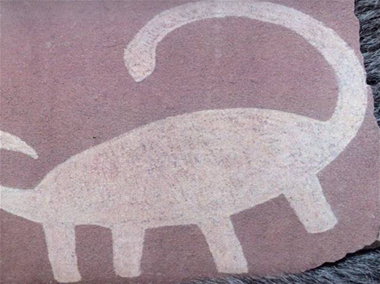
Utah's White Canyon Region
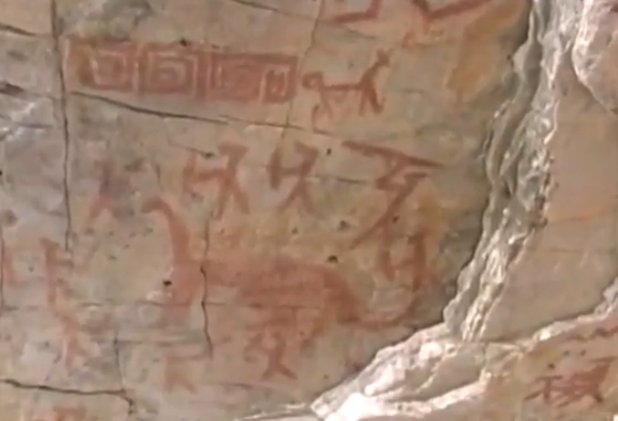
Amazon Rain Forest Basin in Northern Peru

El Toro Mountain part of the "Acambaro Figurine" collection found by Waldemar Julsrud
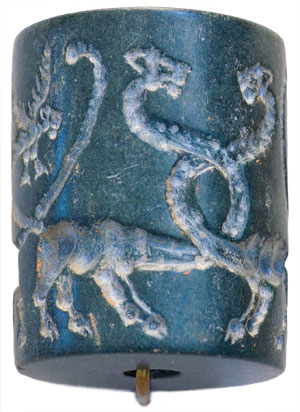
Mesopotamian Cylinder Seal of Uruk currently housed in the Louvre
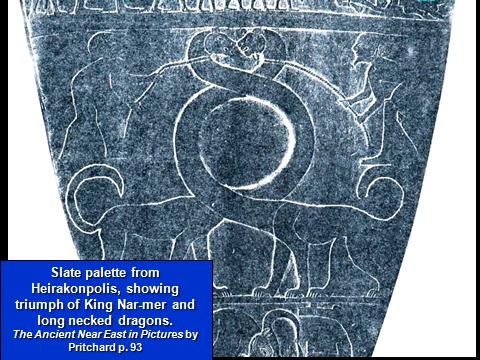
Housed at the British Museum
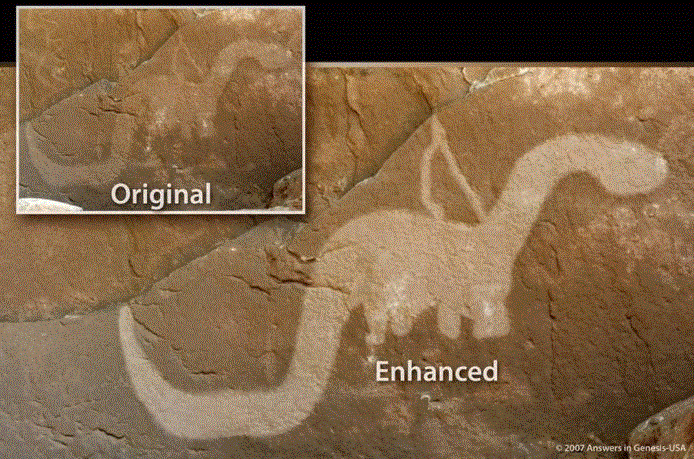
By the North American Anasazi in the area now known as Utah. A natural brownish film over top the cave drawing authenticates its age.
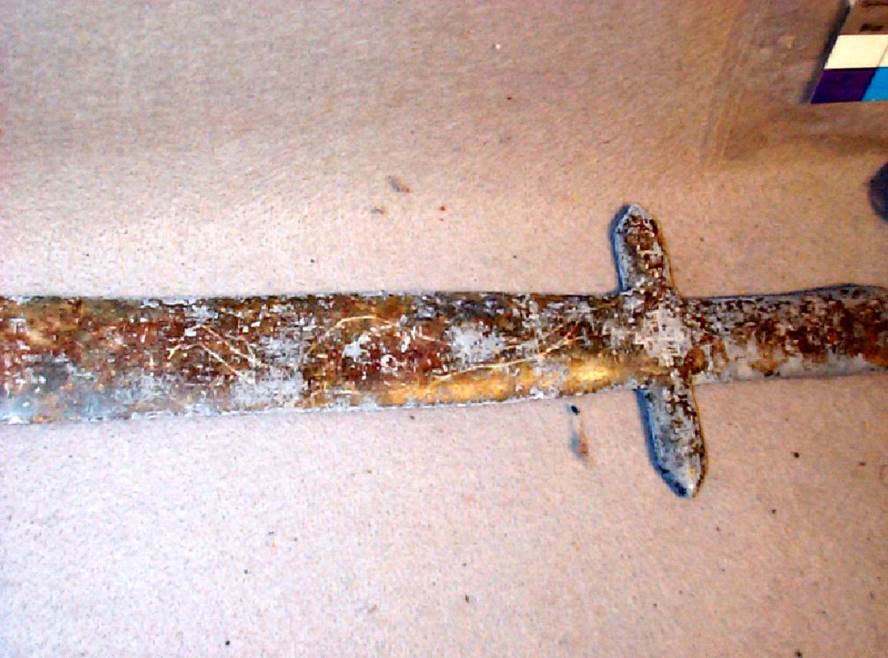
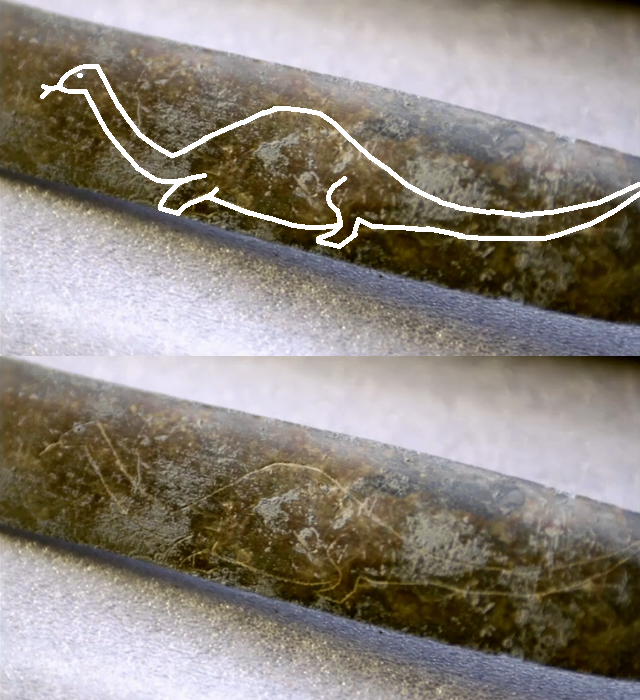
A mysterious excavation in Tucson Arizona unearthed 31 Roman-style artifacts. One of which was this sword.
Protoceratops
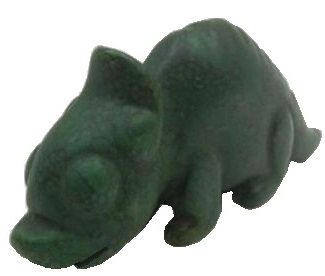
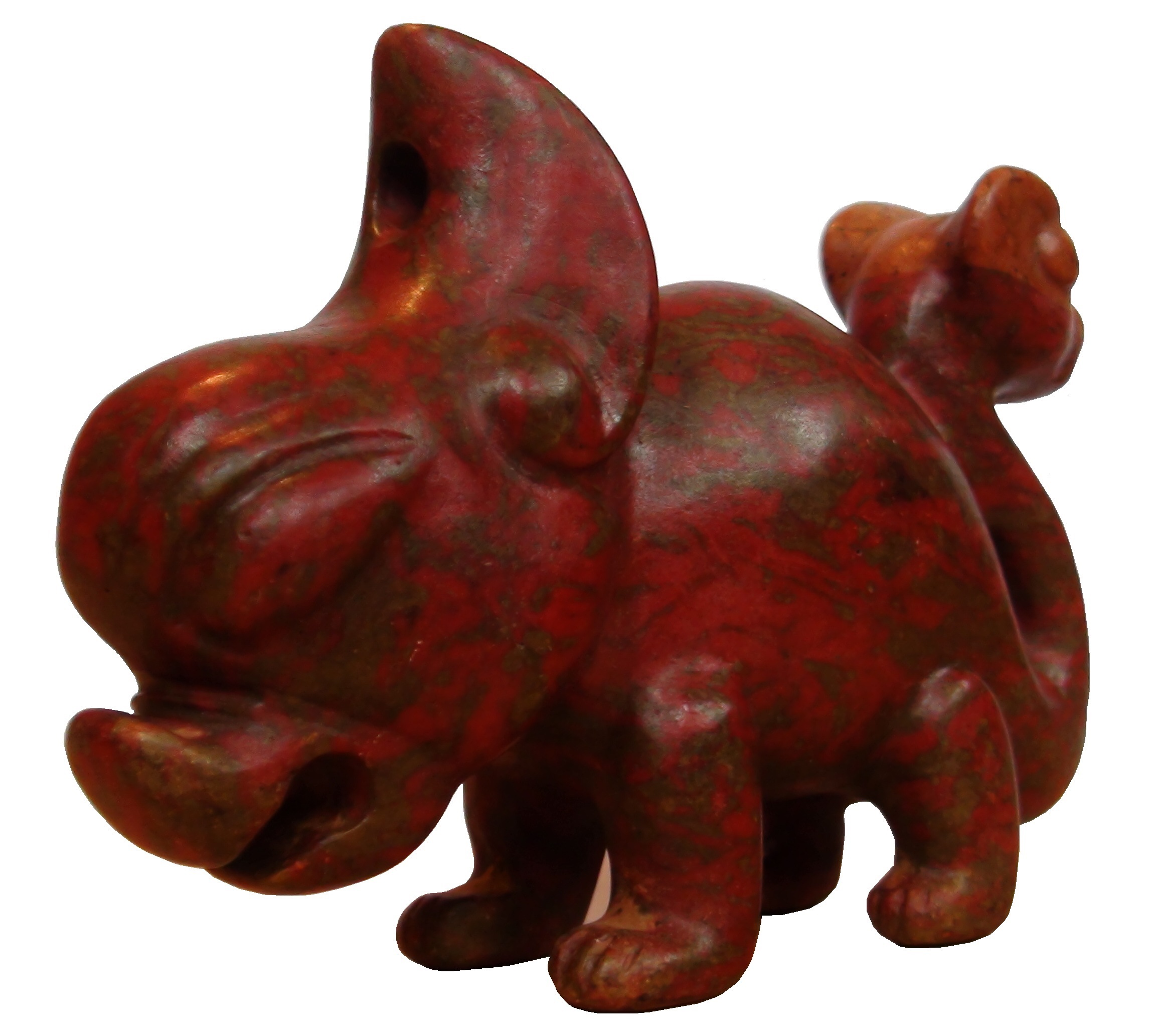
Hongshan carvings approximately 4,000 years ago China
It is also important to note that the average dinosaur was approximately the size of a full grown dog.
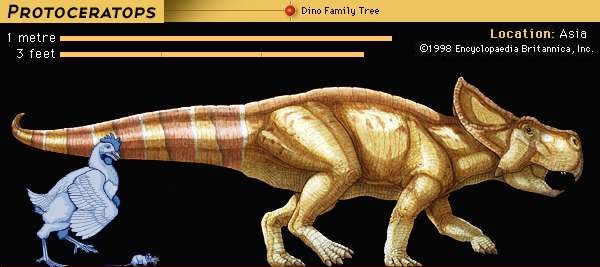
Stegasaurus
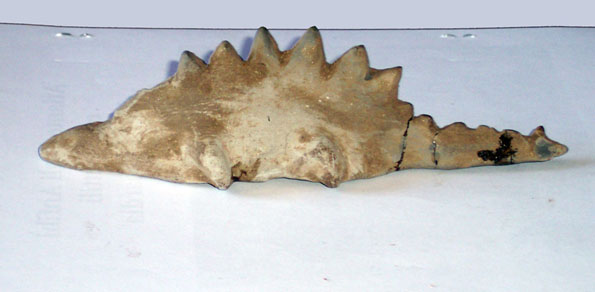
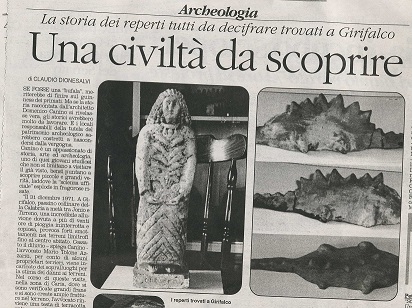
Girifalco region of Southern Italy.
Tyranosaurus Rex
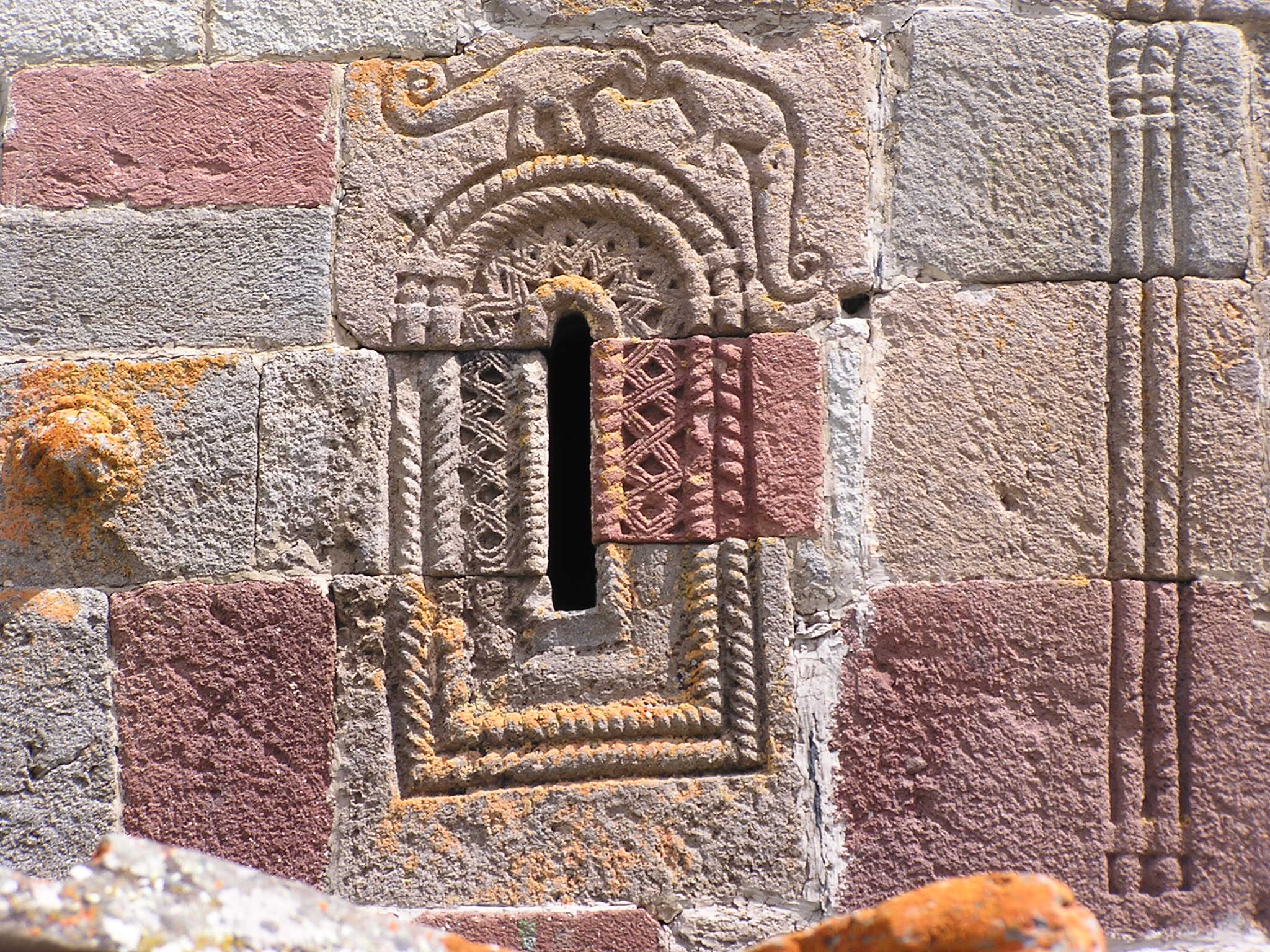
Holy Trinity Church built in the 1300s in the country of Georgia.
These dinosaurs are not limited to physical depictions. They have also been written about. Extensively. Here is a beast from Beowulf, the Anglo-Saxon Epic:
"Grendel's swift hard claws
snatched at the first Geat
He came to, ripped him apart, cut
His body to bits with powerful jaws,
Drank the blood from his veins and bolted
Him down, hands and feet; death
And Grendel's great teeth came together,
Snapping life shut."
"but their weapons
Could not hurt him,
the sharpest and hardest iron
Could not scratch at Grendel's skin"
“The fiend reached for him with his claw, but he grasped it with set purpose, and
threw his weight on Grendel’s arm.”
This creature had huge jaws that could devour people whole, was bipedal with arms, and tough skin. This quite accurately describes a tyrannosaurus rex, or more accurately the Megalosaurus which fossils have been found in the Anglo-Saxon area. In Beowulf, Grendel, which means “to Below” (like you would imagine a T-rex-like creature would), even had a mother of the same kind, insisting it was a real biological creature.
This may be shocking. But scientific observation insists on the co-existence of humans and dinosaurs. Here is a picture of some red blood cell fragments and soft tissue (indicated by the arrow) found in Tyranosaurus Rex remains:
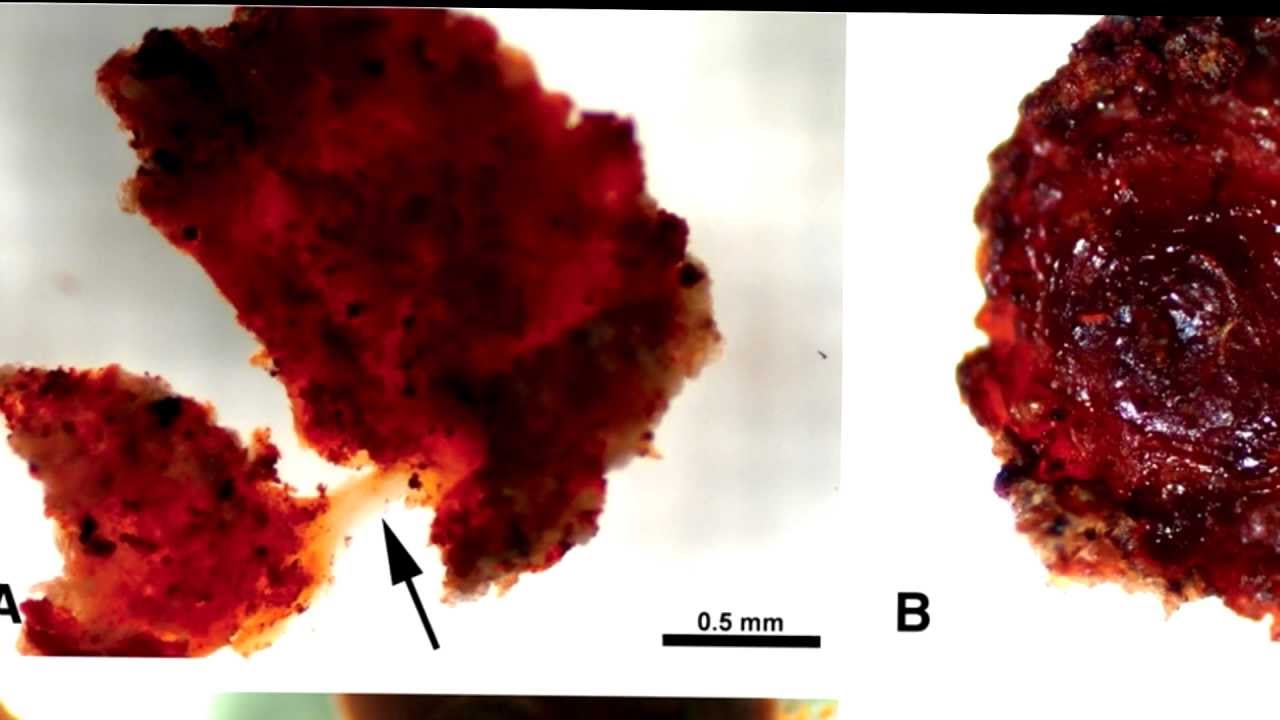
The Anglo Saxon language had many words to describe the various types of large reptilian creatures. The following is from “A Concise Anglo-Saxon Dictionary” by John R. Clark Hall:
Ûhtfloga: twilight−flier dragon
Wîdfloga: wide−flier dragon
Draca: sea−monster dragon
Eorðdraca: dragon that lives in the earth.
Lyftflog: generic flying dragon
Nîðdraca: hostile dragon
sædraca: sea−dragon.
Wyrmhord: hoard of dragons
The Brachiosaurus was also written about. The writer of the book of Job clearly describes the attributes of a brachiosaurus and calls it ‘Behemoth’ (or ‘Bahamut’ for FF7 fans), a chief of the creations of God:
Job 40:15-23
“Lo, I pray thee, Behemoth, that I made with thee: Grass as an ox he eateth.
Lo, I pray thee, his power [is] in his loins, And his strength in the muscles of his
belly.
He doth bend his tail as a cedar, The sinews of his thighs are wrapped together,
His bones [are] tubes of brass, His bones [are] as a bar of iron.
He [is] a beginning of the ways of God, His Maker bringeth nigh his sword;
For food do mountains bear for him, And all the beasts of the field play there…
Lo, a flood oppresseth -- he doth not haste, He is confident though Jordan Doth
come forth unto his mouth.”
This shows Behemoth was an Herbivore, had a tail the size of a large tree, and was very large. There is only one animal like this in the history of the world. The Brachiosaurus. As shown in the Mesopotamian cylinder seal and the Egyptian plates, the brachiosaurus was a known creature in the region where Job would have been living.
Other well known historians have depicted dinosaurs in a very matter of fact manner.
Herodotus – 5th Century B.C.
“There is a place in Arabia, situated very near the city of Buto, to which I went,
on hearing of some winged serpents; and when I arrived there, I saw bones and
spines of serpents, in such quantities as it would be impossible to describe. The
form of the serpent is like that of the water-snake; but he has wings without
feathers, and as like as possible to the wings of a bat.”
John de Trokelow – 14th Century A.D.
"Close to the town of Bures, near Sudbury, there has lately appeared, the great
hurt of the countryside, a dragon, vast in body, with a crested head, teeth like a
saw, and a tail extending to an enormous length. Having slaughtered the
shepherd of a flock, it devoured many sheep."
The Travels of Marco Polo, 1948, Book 2, Chapter XL, pg. 185-186
"Leaving the city of Yachi, and traveling ten days in a westerly direction, you
reach the province of Karazan, which is also the name of the chief city....Here
are seen huge serpents, ten paces in length (about 30 feet), and ten
spans (about 8 feet) girt of the body. At the fore part, near the head, they
have two short legs, having three claws like those of a tiger, with eyes larger
than a forepenny loaf (pane da quattro denari) and very glaring."
An old Assiniboine (Native American) story tells of a war party that:
“…Traveled a long distance to unfamiliar lands and [saw] some large lizards.
The warriors held a council and discussed what they knew about those strange
creatures. They decided that those big lizards were bad medicine and should
be left alone. However, one warrior who wanted more war honors said that he
was not afraid of those animals and would kill one. He took his lance [a very
old weapon used before horses] and charged one of the large lizard type
animals and tried to kill it. But he had trouble sticking his lance in the
creature’s hide and during the battle he himself was killed and eaten.”
(Mayor, Fossil Legends of the First Americans, 2005, p. 294.)

The dragon slowly slipped into the category of mythology rather than history. But this is only due to the gradual extinction of dinosaurs over time. Most are not the seemingly embellished fire-breathing winged monsters, but rather, matter-of-fact accounts of real living creatures. Here we have another example of how dinosaurs/dragons were becoming extinct even in the 1614 when this article was printed:

Dinosaurs were depicted throughout the globe at all times. Here are some examples:
Brachiosaurus

Utah's White Canyon Region

Amazon Rain Forest Basin in Northern Peru

El Toro Mountain part of the "Acambaro Figurine" collection found by Waldemar Julsrud

Mesopotamian Cylinder Seal of Uruk currently housed in the Louvre

Housed at the British Museum

By the North American Anasazi in the area now known as Utah. A natural brownish film over top the cave drawing authenticates its age.


A mysterious excavation in Tucson Arizona unearthed 31 Roman-style artifacts. One of which was this sword.
Protoceratops


Hongshan carvings approximately 4,000 years ago China
It is also important to note that the average dinosaur was approximately the size of a full grown dog.

Stegasaurus


Girifalco region of Southern Italy.
Tyranosaurus Rex

Holy Trinity Church built in the 1300s in the country of Georgia.
These dinosaurs are not limited to physical depictions. They have also been written about. Extensively. Here is a beast from Beowulf, the Anglo-Saxon Epic:
"Grendel's swift hard claws
snatched at the first Geat
He came to, ripped him apart, cut
His body to bits with powerful jaws,
Drank the blood from his veins and bolted
Him down, hands and feet; death
And Grendel's great teeth came together,
Snapping life shut."
"but their weapons
Could not hurt him,
the sharpest and hardest iron
Could not scratch at Grendel's skin"
“The fiend reached for him with his claw, but he grasped it with set purpose, and
threw his weight on Grendel’s arm.”
This creature had huge jaws that could devour people whole, was bipedal with arms, and tough skin. This quite accurately describes a tyrannosaurus rex, or more accurately the Megalosaurus which fossils have been found in the Anglo-Saxon area. In Beowulf, Grendel, which means “to Below” (like you would imagine a T-rex-like creature would), even had a mother of the same kind, insisting it was a real biological creature.
This may be shocking. But scientific observation insists on the co-existence of humans and dinosaurs. Here is a picture of some red blood cell fragments and soft tissue (indicated by the arrow) found in Tyranosaurus Rex remains:

The Anglo Saxon language had many words to describe the various types of large reptilian creatures. The following is from “A Concise Anglo-Saxon Dictionary” by John R. Clark Hall:
Ûhtfloga: twilight−flier dragon
Wîdfloga: wide−flier dragon
Draca: sea−monster dragon
Eorðdraca: dragon that lives in the earth.
Lyftflog: generic flying dragon
Nîðdraca: hostile dragon
sædraca: sea−dragon.
Wyrmhord: hoard of dragons
The Brachiosaurus was also written about. The writer of the book of Job clearly describes the attributes of a brachiosaurus and calls it ‘Behemoth’ (or ‘Bahamut’ for FF7 fans), a chief of the creations of God:
Job 40:15-23
“Lo, I pray thee, Behemoth, that I made with thee: Grass as an ox he eateth.
Lo, I pray thee, his power [is] in his loins, And his strength in the muscles of his
belly.
He doth bend his tail as a cedar, The sinews of his thighs are wrapped together,
His bones [are] tubes of brass, His bones [are] as a bar of iron.
He [is] a beginning of the ways of God, His Maker bringeth nigh his sword;
For food do mountains bear for him, And all the beasts of the field play there…
Lo, a flood oppresseth -- he doth not haste, He is confident though Jordan Doth
come forth unto his mouth.”
This shows Behemoth was an Herbivore, had a tail the size of a large tree, and was very large. There is only one animal like this in the history of the world. The Brachiosaurus. As shown in the Mesopotamian cylinder seal and the Egyptian plates, the brachiosaurus was a known creature in the region where Job would have been living.
Other well known historians have depicted dinosaurs in a very matter of fact manner.
Herodotus – 5th Century B.C.
“There is a place in Arabia, situated very near the city of Buto, to which I went,
on hearing of some winged serpents; and when I arrived there, I saw bones and
spines of serpents, in such quantities as it would be impossible to describe. The
form of the serpent is like that of the water-snake; but he has wings without
feathers, and as like as possible to the wings of a bat.”
John de Trokelow – 14th Century A.D.
"Close to the town of Bures, near Sudbury, there has lately appeared, the great
hurt of the countryside, a dragon, vast in body, with a crested head, teeth like a
saw, and a tail extending to an enormous length. Having slaughtered the
shepherd of a flock, it devoured many sheep."
The Travels of Marco Polo, 1948, Book 2, Chapter XL, pg. 185-186
"Leaving the city of Yachi, and traveling ten days in a westerly direction, you
reach the province of Karazan, which is also the name of the chief city....Here
are seen huge serpents, ten paces in length (about 30 feet), and ten
spans (about 8 feet) girt of the body. At the fore part, near the head, they
have two short legs, having three claws like those of a tiger, with eyes larger
than a forepenny loaf (pane da quattro denari) and very glaring."
An old Assiniboine (Native American) story tells of a war party that:
“…Traveled a long distance to unfamiliar lands and [saw] some large lizards.
The warriors held a council and discussed what they knew about those strange
creatures. They decided that those big lizards were bad medicine and should
be left alone. However, one warrior who wanted more war honors said that he
was not afraid of those animals and would kill one. He took his lance [a very
old weapon used before horses] and charged one of the large lizard type
animals and tried to kill it. But he had trouble sticking his lance in the
creature’s hide and during the battle he himself was killed and eaten.”
(Mayor, Fossil Legends of the First Americans, 2005, p. 294.)
edit on 21-6-2018 by cooperton because: (no reason given)
The word dragon is also used in the Old Testament 25 times. Again, this describes large serpentine creatures, which is exactly what a dinosaur is.
Isaiah 27:1
“In that day lay a charge doth Jehovah, With his sword -- the sharp, and the
great, and the strong, On leviathan -- a fleeing serpent, And on leviathan -- a
crooked serpent, And He hath slain the dragon that [is] in the sea.”
Nearly every culture that has earned its way into history has a name for large serpentine creatures:

Carbon dating is one of the few dating methods that allows us a reasonable estimate on the beginning concentration of C-14 in a sample. If atmospheric C-14 ratios have remained consistent throughout history, then we will have fairly accurate C-14 results, with some degree of error due to the variability in organism and tissue accumulation of C-14. All C-14 tests done on dinosaur remains have returned an age range between 4,000-40,000 years old. Of course, all of this empirical data is shunned by the scientific elite because it would mean their life’s research regarding evolution would demonstrably impossible.
Here are the results:
QbdH3l1UjPQ
This presentation was promptly attacked by the secular thought-police.

They refused the data, not based on any sort of clerical or methods error, but rather, they blindly refused it based on their own bias. This is the opposite of how science should be conducted. These tests were conducted by accredited AMS Labs (Accelerator Mass Spectrometry). They stood by their results, until they discovered that their results indicated a 50,000 years old if that is the case. But in all attempts at carbon-dating dinosaurs, it has been younger than 40,000 years old.
I personally was looking to carbon-date some dinosaur bones I had bought at auction, and wanted to make sure that this was true. The scientist I was in correspondence with said:
“If the sample is >100 ka, the result would be, >50 ka as that is the limit on a radiocarbon analysis.”
She also insisted that shellac or other contaminants are no problem for even the most rudimentary C-14 pre-cleaning techniques:
Link: www.cambridge.org... oratory-ottawa-canada/9DCDE4DC291E00AD8AF00A63590D4FCF
Link2: www.researchgate.net...
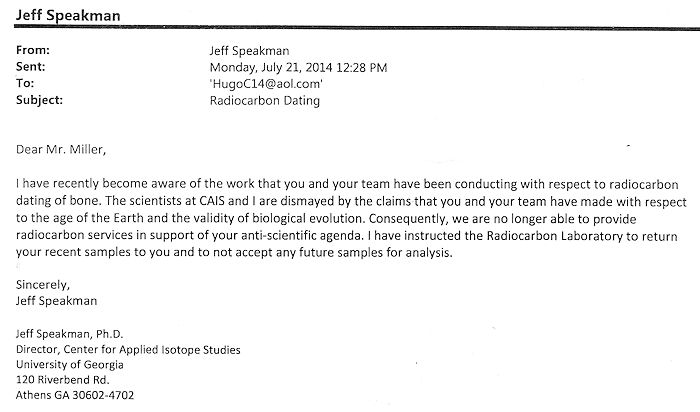
That^ letter came after one of the lab techs at the Georgia University found their own results being shown on youtube as dinosaur samples. Here were the initial results:
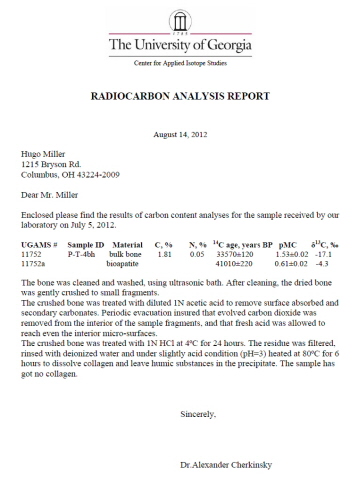
It is apparent that the scientific community will be very stubborn despite the abundance of historical and scientific evidence demonstrating an earlier existence for dinosaurs. Be persistent and never quit looking for the truth.
To finish, there are multiple “myths” that are actually slightly embellished dinosaurs like Grendel in Beowulf. France has a very matter-of-fact story regarding the Tarasque - a dragon-like creature that had a shell covering its backside with a club tail. Here is their depiction of the Tarasque:

Looking past some of the embellishments, this is a telling representation of the ankylosaurus – shelled back, serpentine body, and a club tail:
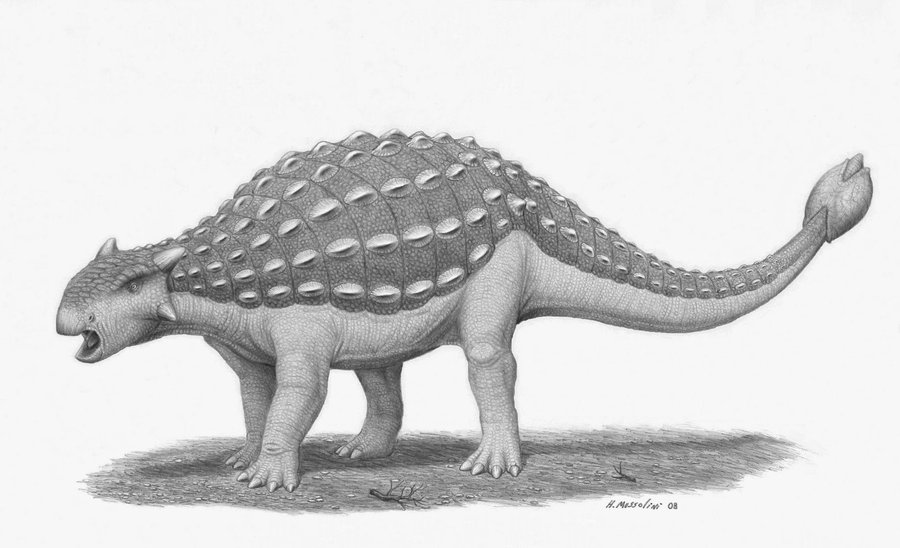
Isaiah 27:1
“In that day lay a charge doth Jehovah, With his sword -- the sharp, and the
great, and the strong, On leviathan -- a fleeing serpent, And on leviathan -- a
crooked serpent, And He hath slain the dragon that [is] in the sea.”
Nearly every culture that has earned its way into history has a name for large serpentine creatures:

Carbon dating is one of the few dating methods that allows us a reasonable estimate on the beginning concentration of C-14 in a sample. If atmospheric C-14 ratios have remained consistent throughout history, then we will have fairly accurate C-14 results, with some degree of error due to the variability in organism and tissue accumulation of C-14. All C-14 tests done on dinosaur remains have returned an age range between 4,000-40,000 years old. Of course, all of this empirical data is shunned by the scientific elite because it would mean their life’s research regarding evolution would demonstrably impossible.
Here are the results:
QbdH3l1UjPQ
This presentation was promptly attacked by the secular thought-police.

They refused the data, not based on any sort of clerical or methods error, but rather, they blindly refused it based on their own bias. This is the opposite of how science should be conducted. These tests were conducted by accredited AMS Labs (Accelerator Mass Spectrometry). They stood by their results, until they discovered that their results indicated a 50,000 years old if that is the case. But in all attempts at carbon-dating dinosaurs, it has been younger than 40,000 years old.
I personally was looking to carbon-date some dinosaur bones I had bought at auction, and wanted to make sure that this was true. The scientist I was in correspondence with said:
“If the sample is >100 ka, the result would be, >50 ka as that is the limit on a radiocarbon analysis.”
She also insisted that shellac or other contaminants are no problem for even the most rudimentary C-14 pre-cleaning techniques:
Link: www.cambridge.org... oratory-ottawa-canada/9DCDE4DC291E00AD8AF00A63590D4FCF
Link2: www.researchgate.net...

That^ letter came after one of the lab techs at the Georgia University found their own results being shown on youtube as dinosaur samples. Here were the initial results:

It is apparent that the scientific community will be very stubborn despite the abundance of historical and scientific evidence demonstrating an earlier existence for dinosaurs. Be persistent and never quit looking for the truth.
To finish, there are multiple “myths” that are actually slightly embellished dinosaurs like Grendel in Beowulf. France has a very matter-of-fact story regarding the Tarasque - a dragon-like creature that had a shell covering its backside with a club tail. Here is their depiction of the Tarasque:

Looking past some of the embellishments, this is a telling representation of the ankylosaurus – shelled back, serpentine body, and a club tail:

edit on 21-6-2018 by cooperton because: (no reason given)
Great thread! A welcome change of course from all the politics, and a return to “the old days” of ATS.
Being raised baptist , and later realizing the obsurditiy in some of the stories (Noah’s Ark, Jonah’s 3 days Ina fish) I just figured that my Sunday school teachers insistence that man lived side by side to be equally obsurd.
But I guess it makes sense?
Assuming someone doesn’t come along and immediately debunk your thread 😂
Youvef given me things to think about thanks!
Being raised baptist , and later realizing the obsurditiy in some of the stories (Noah’s Ark, Jonah’s 3 days Ina fish) I just figured that my Sunday school teachers insistence that man lived side by side to be equally obsurd.
But I guess it makes sense?
Assuming someone doesn’t come along and immediately debunk your thread 😂
Youvef given me things to think about thanks!
Nice thread!
A lot of those SA artifacts have been debunked, but this is still something to keep researching.
Thank you for not posting the Angor Wat carving
A lot of those SA artifacts have been debunked, but this is still something to keep researching.
Thank you for not posting the Angor Wat carving
a reply to: cooperton
I only got as far as the Acambro figures ...
Wiki
Kewl story though.
I only got as far as the Acambro figures ...
Archaeologist Charles C. Di Peso was working for the Amerind Foundation, an anthropological organization dedicated to preserving Native American culture. Di Peso examined the figures and determined that they were not authentic, and had instead been produced by local modern-day farmers.[3][4] He concluded that the figurines were indeed fakes: their surfaces displayed no signs of age; no dirt was packed into their crevices; and though some figurines were broken, no pieces were missing and no broken surfaces were worn.
Furthermore, the excavation’s stratigraphy clearly showed that the artifacts were placed in a recently dug hole filled with a mixture of the surrounding archaeological layers. DiPeso also learned that a local family had been making and selling these figurines to Julsrud for a peso apiece since 1944, presumably inspired by films shown at Acámbaro’s cinema, locally available comic books and newspapers, and accessible day trips to Mexico City’s Museo Nacional.[5]
Wiki
Kewl story though.
originally posted by: SteamyJeans
Great thread! A welcome change of course from all the politics, and a return to “the old days” of ATS.
Being raised baptist , and later realizing the obsurditiy in some of the stories (Noah’s Ark, Jonah’s 3 days Ina fish) I just figured that my Sunday school teachers insistence that man lived side by side to be equally obsurd.
But I guess it makes sense?
Assuming someone doesn’t come along and immediately debunk your thread 😂
Youvef given me things to think about thanks!
No one can debunk this because every early historical reference to dragons is considered myth and legend, despite the world wide accounts of such creatures.
I think it's extremely ignorant to dismiss the possibility that some dinosaurs were still knocking about more recently than the history books would have us know.
I remember this from the Congo
In Search Of the Congo Dinosaur
There is always something new coming out of Africa.
Herodotus, fifth century B.C.
Perhaps the most exciting prospect for the world of creation science is the possibility that dinosaurs may still be living in the remote jungles of the world. Evolution and its accompanying necessity of long ages of evolutionary development would be hard pressed to accommodate a living dinosaur. Such is the story of Mokele-mbembe, a creature that some scientists believe could be a surviving sauropod dinosaur. The one area today that would favor living dinosaurs is the vast and unexplored swamps of equatorial Africa. Many of the early accounts of the flora and fauna of West and Central Africa came from missionaries and explorers. In 1776, the Abbé Lievain Bonaventure Proyart, wrote in the History of Loango, Kakonga, and other Kingdoms in Africa, about a group of French missionaries who had found the tracks of an enormous unknown animal in the jungle. Pinkerton's translation, published in 1914, reads:
It must be monstrous, the prints of its claws are seen upon the earth, and formed an impression on it of about three feet in circumference. In observing the posture and disposition of the footprints, they concluded that it did not run this part of the way, and that it carried its claws at a distance of seven or eight feet one from the other.
Prints this large could only have been made by an animal the size of an elephant, but elephants do not possess clawed toes. What kind of monster was it? In 1913, the German government decided to survey its then colony of Cameroon, and chose Captain Freiherr von Stein zu Lausnitz to lead the expedition. Von Stein included the following fascinating report on a creature "very much feared by the Negroes of certain parts of the territory of the Congo, the lower Ubangi, the Sangha, and the Ikelemba rivers." They called the animal, Mokele-mbembe.
The animal is said to be of a brownish gray color . . . its size approximating that of an elephant. It is said to have a long and very flexible neck. Some spoke of a long muscular tail like that of an alligator. Canoes coming near it are said to be doomed; the animals are said to attack the vessels at once and to kill the crews but without eating the bodies. The creature is said to live in the caves that have been washed out by the river in the clay of its shores at sharp bends. It is said to climb the shore even in daytime in search of its food; its diet is said to be entirely vegetable.
You can read more here..
In Search Of the Congo Dinosaur
There is always something new coming out of Africa.
Herodotus, fifth century B.C.
Perhaps the most exciting prospect for the world of creation science is the possibility that dinosaurs may still be living in the remote jungles of the world. Evolution and its accompanying necessity of long ages of evolutionary development would be hard pressed to accommodate a living dinosaur. Such is the story of Mokele-mbembe, a creature that some scientists believe could be a surviving sauropod dinosaur. The one area today that would favor living dinosaurs is the vast and unexplored swamps of equatorial Africa. Many of the early accounts of the flora and fauna of West and Central Africa came from missionaries and explorers. In 1776, the Abbé Lievain Bonaventure Proyart, wrote in the History of Loango, Kakonga, and other Kingdoms in Africa, about a group of French missionaries who had found the tracks of an enormous unknown animal in the jungle. Pinkerton's translation, published in 1914, reads:
It must be monstrous, the prints of its claws are seen upon the earth, and formed an impression on it of about three feet in circumference. In observing the posture and disposition of the footprints, they concluded that it did not run this part of the way, and that it carried its claws at a distance of seven or eight feet one from the other.
Prints this large could only have been made by an animal the size of an elephant, but elephants do not possess clawed toes. What kind of monster was it? In 1913, the German government decided to survey its then colony of Cameroon, and chose Captain Freiherr von Stein zu Lausnitz to lead the expedition. Von Stein included the following fascinating report on a creature "very much feared by the Negroes of certain parts of the territory of the Congo, the lower Ubangi, the Sangha, and the Ikelemba rivers." They called the animal, Mokele-mbembe.
The animal is said to be of a brownish gray color . . . its size approximating that of an elephant. It is said to have a long and very flexible neck. Some spoke of a long muscular tail like that of an alligator. Canoes coming near it are said to be doomed; the animals are said to attack the vessels at once and to kill the crews but without eating the bodies. The creature is said to live in the caves that have been washed out by the river in the clay of its shores at sharp bends. It is said to climb the shore even in daytime in search of its food; its diet is said to be entirely vegetable.
You can read more here..
edit on 6/21/2018 by Gargoyle91 because: (no reason
given)
Thanks for putting this together. Not that I necessarily believe the accounts as an accurate representation of humans being around them but rather if
anything the more modern creatures that could appear as dinosaurs such as Komodo dragon, etc. Interesting nonetheless for some reconsideration.
Come on folks.....Im pretty sure people beyond a couple of hundred years ago had no concept of Earth ages in the hundreds of millions of years. Let's
face it the bible has an Earth age of 6500 years and there are western educated people who believe this tody here on ATS.....OMG!
So there we are in the year 1000 and we dig up a fossil of a dinosaur and we know all about buried bones , after all we bury our dead and we dig up all sorts of dog, sheep, cattle bones etc. So we have a conundrum. A gigantic skeleton and a bible telling us the earth is only 6500 years old. WOW these animals don't exist now but they must have a few hundred years ago.........and there we have the evolution of a dragon story.......DUH!
Please. Use your imagination for something a little more down to earth than the total rejection of modern science in favour of understandably ignorant speculation in the past disguised as historical legends.
So there we are in the year 1000 and we dig up a fossil of a dinosaur and we know all about buried bones , after all we bury our dead and we dig up all sorts of dog, sheep, cattle bones etc. So we have a conundrum. A gigantic skeleton and a bible telling us the earth is only 6500 years old. WOW these animals don't exist now but they must have a few hundred years ago.........and there we have the evolution of a dragon story.......DUH!
Please. Use your imagination for something a little more down to earth than the total rejection of modern science in favour of understandably ignorant speculation in the past disguised as historical legends.
a reply to: yorkshirelad
I agree. But, I do find it rather interesting as to how some of these depictions came about.
I know there is a famous one of a stegosaurus, but ended up being a pig and it's in the foreground of some bushes.
But I am also interested into the lore behind the flying serpents of dragons. A lot of cultures have almost the exact same description, or some sort of variation, why?
To add tho. First story that came to thought for me was the story of St George, I did a little research into him, and it resembles an ultra orthodox story of a well known warrior and martyr who has almost the exact same story, probably stolen by the English at some point, or evolved into English literature some how. But what gets me is that classic dragons are a thing in norse mythology, it some how made it's way into everyday Christian faith.
I agree. But, I do find it rather interesting as to how some of these depictions came about.
I know there is a famous one of a stegosaurus, but ended up being a pig and it's in the foreground of some bushes.
But I am also interested into the lore behind the flying serpents of dragons. A lot of cultures have almost the exact same description, or some sort of variation, why?
To add tho. First story that came to thought for me was the story of St George, I did a little research into him, and it resembles an ultra orthodox story of a well known warrior and martyr who has almost the exact same story, probably stolen by the English at some point, or evolved into English literature some how. But what gets me is that classic dragons are a thing in norse mythology, it some how made it's way into everyday Christian faith.
a reply to: cooperton
Nice work and great thread I can't wait to see what else ATS digs up on this!
People have been hunting and killing things like the mammoths for well ever so, one can only assume any that were left we knocked them off and made some great stories.
Also if what little we know about mid evil times has anything to say about it humans slayed dragons. I have always and definitely can see the correlation between dragons and dinosaurs.
Nice work and great thread I can't wait to see what else ATS digs up on this!
People have been hunting and killing things like the mammoths for well ever so, one can only assume any that were left we knocked them off and made some great stories.
Also if what little we know about mid evil times has anything to say about it humans slayed dragons. I have always and definitely can see the correlation between dragons and dinosaurs.
Well that makes a great change to read about something of interest, similar to how ATS used to be...S AND F..........
I know some places where it is not unusual to see 12 ft plus alligators.
They are older than the dinosaurs.
They are older than the dinosaurs.
a reply to: cooperton
I've seen his type of article before but this is the first time I've seen it applied to dragons. You might have something here. The dragon is so universal worldwide that it must have been based upon something. What would that be though? The latest dinosaurs are dated to 4000 BP but your legends are more 400-2000 yrs BP. The closest I can think of are giant crocodiles or maybe old fossil bones.
I have recently been reading about fast petrification of wood and fast formation of rock and stone. While reading, I came across creation.com which has quite a few articles based upon science. I haven't read the dinosaur page yet but it looks interesting: creation.com...
I've seen his type of article before but this is the first time I've seen it applied to dragons. You might have something here. The dragon is so universal worldwide that it must have been based upon something. What would that be though? The latest dinosaurs are dated to 4000 BP but your legends are more 400-2000 yrs BP. The closest I can think of are giant crocodiles or maybe old fossil bones.
I have recently been reading about fast petrification of wood and fast formation of rock and stone. While reading, I came across creation.com which has quite a few articles based upon science. I haven't read the dinosaur page yet but it looks interesting: creation.com...
a reply to: toms54
In the vast majority of cultures which have them, "dragons" are far more snakelike than dinosaurlike.
en.wikipedia.org...
In the vast majority of cultures which have them, "dragons" are far more snakelike than dinosaurlike.
en.wikipedia.org...
No.
While reading, I came across creation.com which has quite a few articles based upon science.
edit on 6/21/2018 by Phage because: (no reason given)
a reply to: Qumulys
Actually, its not that either.
citeseerx.ist.psu.edu...
Actually, its not that either.
Pareidolia is the psychological phenomenon of perceiving significance in vague or random stim-uli, e.g., seeing animals in clouds or the face of a religious figure in a food item. The results of this investigation indicate that the dinosaurs of Kachina Bridge are examples of this phenomenon and exist only as pareidolic illusions.
citeseerx.ist.psu.edu...
new topics
-
Australian mercenary caught and crying as he is a prisoner of war.
Other Current Events: 2 hours ago -
JILL BIDEN Wants JOE to Punish Democrats Who Forced Him to Leave Office in Disgrace on 1.20.2025.
2024 Elections: 2 hours ago -
Panamanian President-“every square meter” of the Panama Canal belongs to Panama.
New World Order: 3 hours ago -
NYPD arrests migrant who allegedly set woman on fire on subway train, watched her burn to death
Breaking Alternative News: 5 hours ago -
Chef Gerald R. Ford
Food and Cooking: 8 hours ago -
The clotting is not going away latest
Medical Issues & Conspiracies: 8 hours ago -
F-18 shot down over Red Sea....by our own Destroyer?
Other Current Events: 10 hours ago -
California Business Owners Blindsided by Surprise Payroll Taxes
US Political Madness: 10 hours ago
top topics
-
California Business Owners Blindsided by Surprise Payroll Taxes
US Political Madness: 10 hours ago, 20 flags -
The Effects of Electric Fields and Plasma on Plant Growth
Science & Technology: 16 hours ago, 9 flags -
The clotting is not going away latest
Medical Issues & Conspiracies: 8 hours ago, 9 flags -
F-18 shot down over Red Sea....by our own Destroyer?
Other Current Events: 10 hours ago, 7 flags -
Anti-Government Protest in Serbia
Social Issues and Civil Unrest: 16 hours ago, 6 flags -
NYPD arrests migrant who allegedly set woman on fire on subway train, watched her burn to death
Breaking Alternative News: 5 hours ago, 6 flags -
Panamanian President-“every square meter” of the Panama Canal belongs to Panama.
New World Order: 3 hours ago, 6 flags -
JILL BIDEN Wants JOE to Punish Democrats Who Forced Him to Leave Office in Disgrace on 1.20.2025.
2024 Elections: 2 hours ago, 3 flags -
Australian mercenary caught and crying as he is a prisoner of war.
Other Current Events: 2 hours ago, 3 flags -
Chef Gerald R. Ford
Food and Cooking: 8 hours ago, 2 flags
active topics
-
Labour Plotting to Postpone May's Council Elections ?
Regional Politics • 13 • : angelchemuel -
The Daily Mail trying to imply “it’s aliens”
Dissecting Disinformation • 11 • : BeyondKnowledge3 -
JILL BIDEN Wants JOE to Punish Democrats Who Forced Him to Leave Office in Disgrace on 1.20.2025.
2024 Elections • 4 • : BernnieJGato -
Panamanian President-“every square meter” of the Panama Canal belongs to Panama.
New World Order • 5 • : FullHeathen -
Just spotted an unusual aircraft Melbourne Australia
Aliens and UFOs • 9 • : Cavemannick -
Australian mercenary caught and crying as he is a prisoner of war.
Other Current Events • 0 • : Cavemannick -
The clotting is not going away latest
Medical Issues & Conspiracies • 10 • : rickymouse -
The Effects of Electric Fields and Plasma on Plant Growth
Science & Technology • 7 • : rickymouse -
F-18 shot down over Red Sea....by our own Destroyer?
Other Current Events • 9 • : berbofthegreen -
Stark Contrast - BIDEN vs TRUMP Interaction With Military GOLD STAR Families.
2024 Elections • 44 • : WeMustCare

